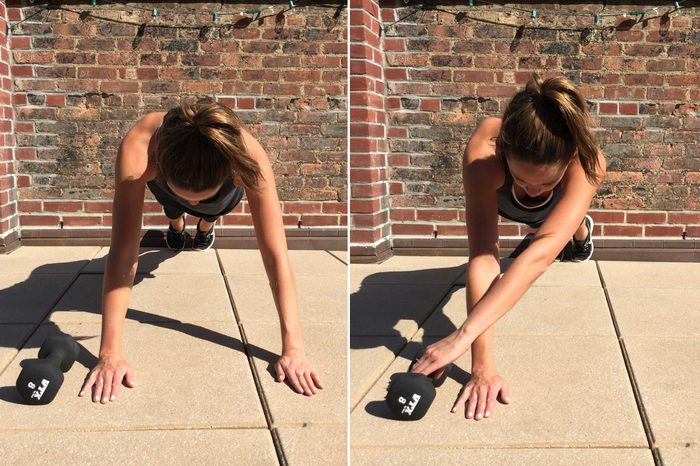
Core stability exercise: The plank
A chiropractor in Chicago, Illinois, Nolan Lee, is a big proponent of core stability exercises like the plank and its many variations. One plank favorite is to hold high plank (with your arms extended as opposed to keeping your forearms on the mat) and alternate a weight between each hand. The weight should sit next to one hand and be pulled across the body with the opposite hand. Repeat this exercise for one minute. “Alignment of the spine should be neutral to maintain ideal core activation,” Lee says. “A good point of focus is the pelvis. If you can keep the pelvis neutral, not tilting it forward or backward, the low back should remain neutral. Planks can be a good way to work on a neutral, stable spine.” Jessica Fritsche, a certified strength and conditioning specialist in Baltimore, reminds us to breathe. “Exhale while you lift the weight and inhale while you return to start position or relax,” she says. Learn how long you need to hold a plank for the best results.
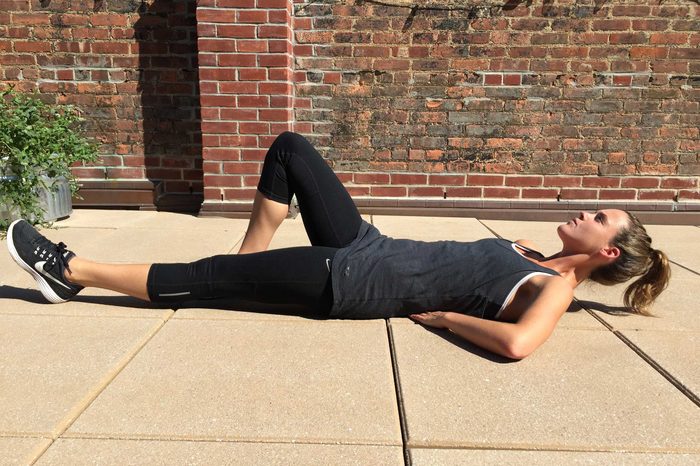
Core stability exercise: The McGill curl up
To avoid creating too much flexion in the lumbar spine, Lee recommends the McGill curl up. To complete this movement, lie on your back with one leg straight and one leg bent. Place your forearms and hands under your low back. Lift your head, chest, and shoulders off the floor as much as you can without jutting out your chin. “Everything moves in one piece like there is a board under you, from the tailbone to head. You might not lift very far, but that is okay,” Lee says. Do two sets of 10, switching legs between sets. These are 5 more exercises that can ease back pain.
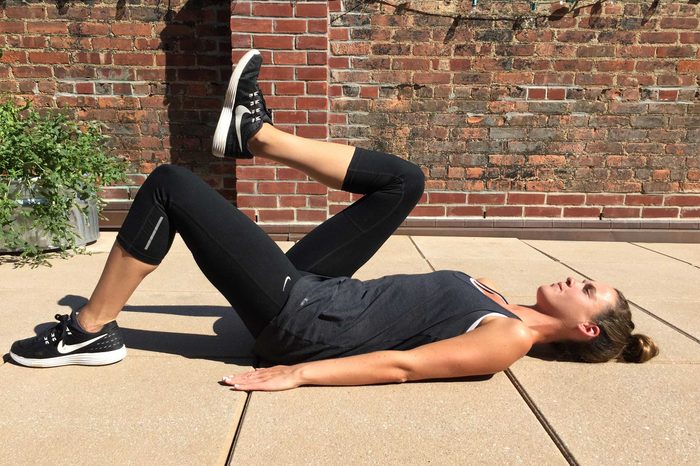
Core stability exercise: Marching
For those just building a fitness routine and a foundation for more complex moves, Brent Locey, a certified personal trainer and SoulCycle instructor in Chicago, IL, recommends core stability exercises like marching. To complete this exercise, lie on the floor with your knees together and bent, feet flat and arms by your side. Lift one leg at a time, maintaining the bend, and draw the knee as close to the abdomen as possible. Locey says it’s important to practice the “drawing-in maneuver” during all core exercises. To draw-in, pull the area below your navel towards your spine, while maintaining a neutral spine. “I often coach this by placing your hand on that area and noticing as you inhale how your stomach draws toward your back,” Locey says. “The most important thing to focus on, especially for beginners, is making sure they have adequate balance and stability… [Otherwise] you could easily injury yourself immediately, or develop long-term injury because your body starts to overcompensate in the wrong areas.” Here are 16 ways to lose weight by just walking.
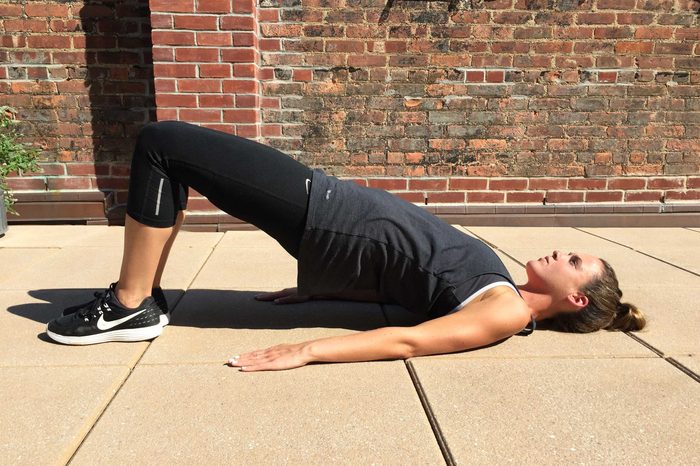
Core stability exercise: Two-leg floor bridge
Another great exercise for foundation work is the two-leg floor bridge. Lying on the floor with your knees bent, feet flat, and arms by your side, lift your pelvis and hips off the floor so that your knees, hips, and shoulders are all in line. Slowly lower to the floor and repeat. Locey recommends doing one to four sets of this core stability exercise, with 12-20 repetitions. Or try one of these 7 home remedies to burn belly fat without fad diets or fitness crazes.
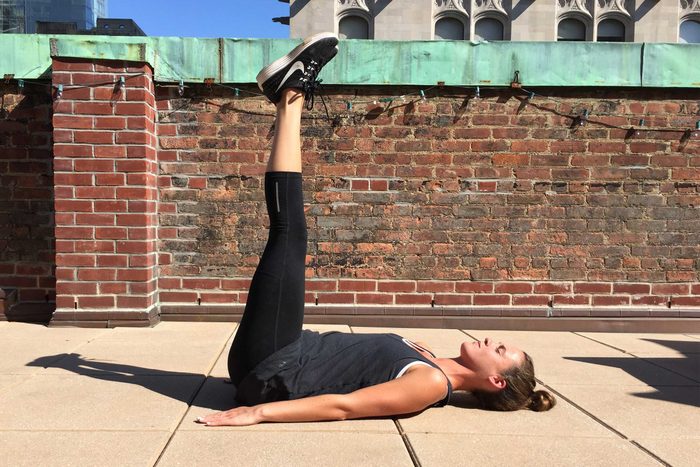
Core strength exercise: Pulse-ups
A pulse up is a progression from a core stability exercise; it is considered a strength core exercise. Lying down face up, lift your legs up so that the soles of your feet are parallel to the ceiling. Lift your legs, posterior, and low back off of the ground to “pulse” up as high as you can. As you return to the starting position, Locey says to brace your core to limit the amount your legs fall toward the ground as much as possible.
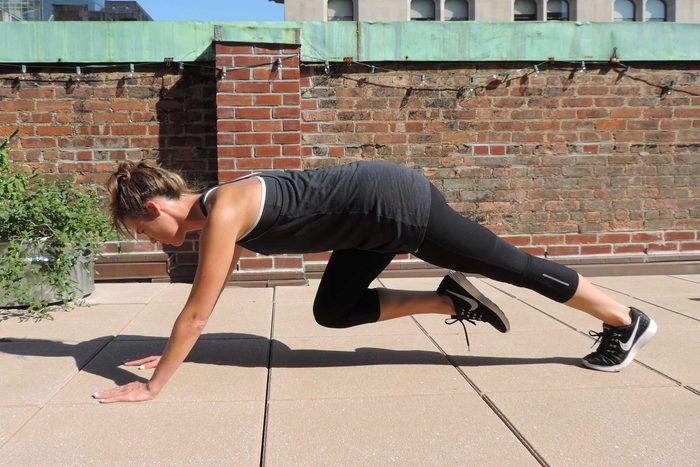
Core strength exercise: Mountain climbers
Mountain climbers are also strength core exercises, a progression from stabilization exercises, says Locey. Starting in a high plank position, begin to “run” in place, bringing your lead knee as close to the same-side elbow as possible. As you alternate your legs, resist the urge to lift your hips and posterior, maintaining a solid brace and engagement of your core throughout. Locey says this is a common mistake. “If an exercise is too advanced or difficult, or if you start to fatigue, our bodies often try to compensate and continue to work through the exercise by finding the path of least resistance, [like] losing proper form to make the movement easier.”
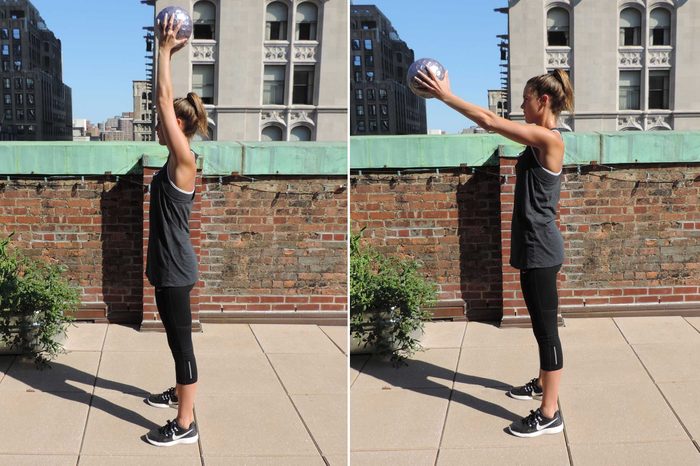
Core power exercise: Soccer throw
Once you’ve built a foundation and your progression continues, move into power core exercises like this one. To complete a soccer throw, stand tall with a medicine ball (or weight of your choice) overhead. Quickly throw the ball toward the floor and follow through with the arms. Complete two to three sets of this power core exercise, repeating the steps for eight to 12 repetitions. Your abdominals should be engaged, says Fritsche. The most common mistake she sees is that people go through the motions and don’t focus on tightening and engaging the core muscles. Locey describes it as a great total body exercise. “It is working not only your upper and lower abs as you go from a total stretch with your hands above [your head], to squeezing your abdominals as you forcefully throw the ball down to the floor, but [it] also works your triceps and latissimus dorsi (back).” (Learn what can cause latissimus dorsi pain.)
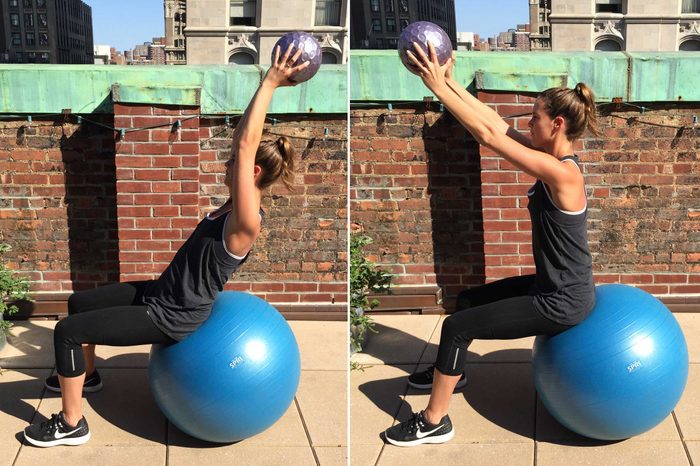
Core power exercise: Swiss Ball with medicine ball pullover throw
Placing a Swiss exercise ball under your lower back, bend your knees at a 90-degree angle with your feet flat on the floor. Hold a medicine ball overhead with your arms extended. Quickly sit up and throw the ball against a wall or to a partner. Catch and repeat.
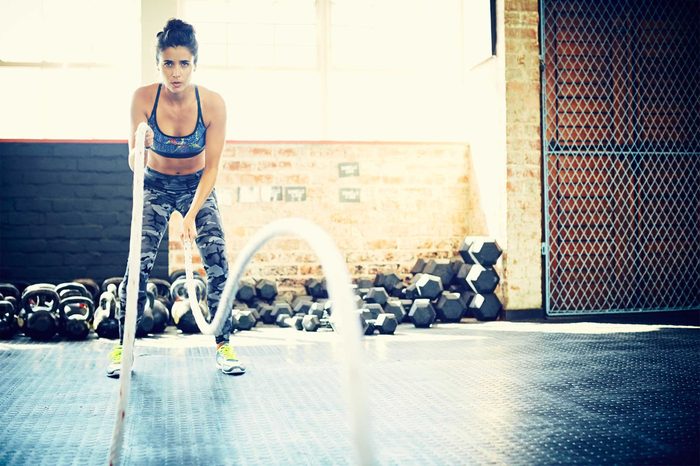
Finally: Cardio and healthy eating!
While targeting your ab muscles, remember they are protected by the fat and tissue surrounding them. A common mistake Lee sees when clients are working on flattening the belly is working on the abdominal muscles but forgetting about the layer of fat that covers them. “You could have great muscles covered with a layer of fat. Calorie burning activities like spinning, HIIT, and cardio workouts are a great addition, and diet will need to be addressed trim down the belly most effectively,” Lee says. “I definitely think nutrition and exercise are equal partners in a goal of a flatter midsection,” says Locey. “You can do all the abdominal and core work you want for hours a day and every day of the week, but if you aren’t eating well, you will mask that muscle growth with layers of fat. As a fan of pasta, cheeseburgers with buns, and bagels, I will say you can have your carbs and get your flat belly too. Carbohydrates themselves are not the things holding people back from having a flat belly; it is the amount in which they are consumed. So as long as you live by the old phrase ‘everything in moderation,’ you can still see results.” Pssst! Here are 23 ways you can lose belly fat without exercising at all.
